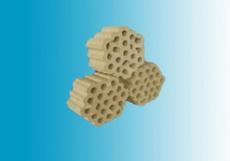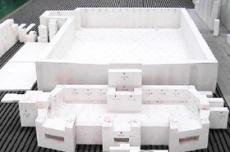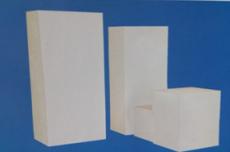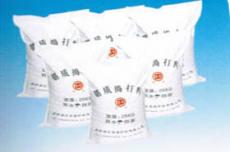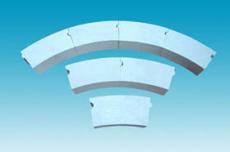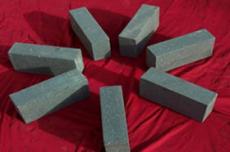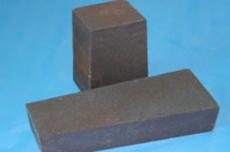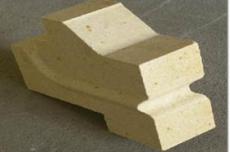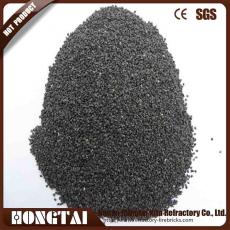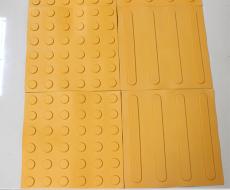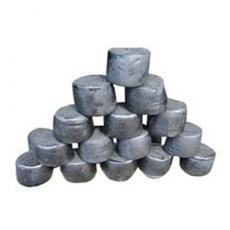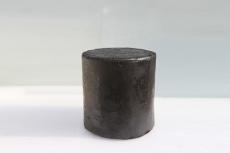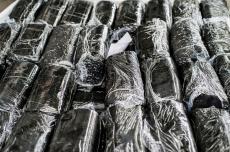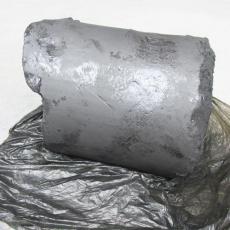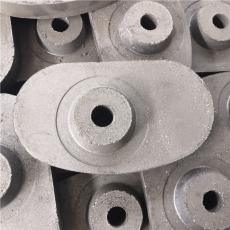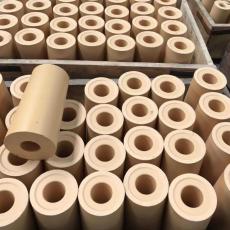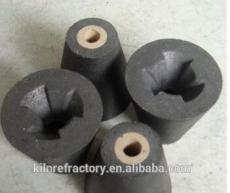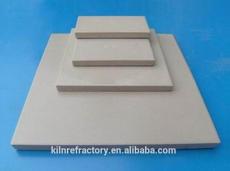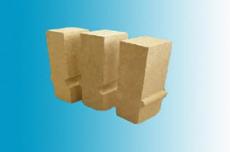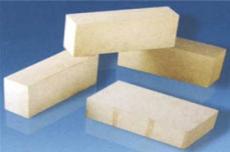
Refractory products used for building blast furnace bodies and related parts. A blast furnace is a vertical furnace that uses blasted hot air to burn coke and reduce and smelt iron ore. It is a thermal equipment that continuously smelts iron under high temperature and reducing atmosphere.
The main reasons for the damage of refractory materials for blast furnaces are comprehensive factors such as mechanical wear of furnace materials, carbon deposition, slag iron erosion, alkali metal erosion and lead-zinc penetration, thermal stress and high temperature load, among which temperature is the decisive factor. Therefore, cooling systems are installed in vulnerable parts of the blast furnace body to increase the service life of the lining. With the development of the steel industry, blast furnaces are becoming larger and larger. At the same time, new technologies such as high-pressure furnace tops, high wind temperatures, oxygen-enriched blast, fuel injection and electronic computer control are used to strengthen smelting, and the conditions for the use of refractory materials are more stringent. By adopting new varieties of refractory materials and improving their quality, improving the furnace cooling system and strengthening management, the life of the lining of a generation of blast furnaces has been continuously extended.
1. Refractory materials for furnace throat
The furnace throat is located at the top of the blast furnace, with a lower temperature. It is subjected to the scouring of blast furnace gas and the impact of the furnace charge. Therefore, the furnace throat plays the role of protecting the upper lining, reasonably distributing the charge and limiting the gas from taking away a large amount of ash. Usually, high-aluminum bricks are used and cast steel plates are added for protection when selecting refractory materials.
2. The upper and middle parts of the furnace body
The blast furnace body is long and the temperature at the lower part is higher. It mainly plays the role of preheating, heating, reduction and slag making. In order to make the charge go down and preheat smoothly, the furnace body usually has a certain inclination. The middle part of the furnace body is generally built with clay or clay-based amorphous refractory materials. The lower part of the furnace body is usually selected for high-quality clay bricks or high-aluminum bricks with good slag resistance, or corundum bricks with higher slag resistance and thermal conductivity due to the higher temperature and higher degree of damage. The temperature in the middle of the furnace body fluctuates greatly, so refractory materials with good thermal shock resistance are needed.
3. Refractory materials for the lower part of the furnace body and the furnace waist
The brick lining from the lower part of the furnace body to the furnace waist is subject to the wear and tear of the descending charge and the rising high-temperature and high-pressure gas, as well as the thermal shock caused by temperature changes, and the chemical erosion of the high-FeO and high-basicity primary slag. The working temperature is 1400~1600℃. Commonly used refractory materials include aluminum carbon bricks, silicon carbide bricks, hot-pressed small carbon bricks and semi-graphitized silicon carbide bricks. There are also some slightly more expensive silicon nitride combined with silicon carbide bricks used in the lower part of the blast furnace body.
4. Refractory materials for the furnace belly
The furnace belly connects the furnace waist and the furnace hearth. The temperature of the furnace belly is as high as 1600~1650℃. At the same time, the furnace belly is also subject to the erosion and wear of the blast furnace gas flow and the damage caused by high temperature. As one of the most vulnerable areas of the blast furnace, in order to increase the furnace life, many blast furnaces use cooling wall technology in the furnace belly. Through the water-cooled wall, slag skin can be formed on the surface of the brick lining to protect the furnace lining. Commonly used refractory materials include high-alumina bricks, aluminum-carbon bricks, semi-graphitized carbon-carbonized bricks, hot-pressed small carbon bricks, Si3N4 combined with SiC bricks, etc.
5. Refractory materials for furnace bottom
The blast furnace bottom is under high temperature and high pressure conditions for a long time, and the working conditions are extremely bad. According to the damage of the furnace bottom after the blast furnace is shut down and the temperature inspection of the furnace bottom during production, the service life of the furnace bottom is the decisive factor affecting the life of the blast furnace. The damage of the furnace bottom can be divided into two stages: in the early stage of the furnace opening, the molten iron infiltrates the bricks to float up and form a pan-shaped deep pit, and the second stage is the chemical erosion after the formation of the sintering layer.
6. Refractory materials for cylinder
The furnace cylinder refers to the part near and below the blast furnace tuyere. There are iron mouths, slag mouths and tuyere at different heights along the furnace cylinder. The lower part of the furnace cylinder is where the slag and molten iron are placed, and its working conditions are similar to those of the upper part of the furnace bottom. The tuyere belt on the upper part of the furnace cylinder is the highest temperature area of the entire blast furnace, with a surface temperature of 1300~1900℃.
The working conditions of the furnace hearth and furnace bottom require that this part of the brick material must have the characteristics of high load softening point, high alkali resistance, high thermal conductivity, high compressive strength, low permeability, good resistance to molten iron corrosion, and strong slag resistance and oxidation resistance.
There are three commonly used types, large carbon brick structure, small carbon brick structure and ceramic cup structure. The ceramic cup structure uses clay bricks, mullite bricks, large corundum prefabricated parts, and corundum mullite. Domestic ceramic cup bricks commonly use plastic phase composite corundum bricks, microporous corundum bricks, corundum-mullite bricks, corundum-silicon carbide bricks, etc.
7. Refractory materials for blast furnace repair
The damage mechanism of refractory materials for blast furnace linings is mainly divided into alkali metal corrosion, iron oxide corrosion, thermal stress damage, and thermal shock damage. In fact, the refractory lining begins to be damaged from the beginning of furnace baking. During the production process, the furnace lining is constantly damaged due to mechanical forces such as wear of furnace charge, scouring of dusty airflow, high temperature heat and other special properties. At this time, the blast furnace lining is severely damaged, and repair is needed.
Common methods for blast furnace repair are spraying, pressure repair and pressure grouting.
Press-in repair commonly uses water-based binding materials and materials with phenolic resin as a binding agent. Water-based binding materials are mainly composed of water glass, cement and phosphate. Its main chemical components are Al₂O₃, Fe₂O₃, K₂O+Na₂O, SiC. Water-based binding materials have high bonding strength, but the temperature of the furnace lining is high during repair, the water evaporates quickly, and the repair layer is easy to foam and fall off, resulting in the repair being not dense and easy to peel off. Materials with phenolic resin as binder are mostly composed of alumina, coke, carbon, etc. For example, the phenolic resin bonded repair material of Sumitomo Corporation of Japan has the main chemical components of Al₂O₃, SiO₂, SiC or MgO, SiC, fixed carbon; the repair material bonded with thermoplastic phenolic resin has the main chemical components of Al₂O₃, SiO2, Fe₂O3, K₂O+Na2O, TiO₂. The main raw materials of hard pressed repair materials are coke, alumina, clay, silicon carbide, and carbon materials.
Small and medium-sized blast furnaces use more water-based binder products, while large blast furnaces use more phenolic resin as a binder.
